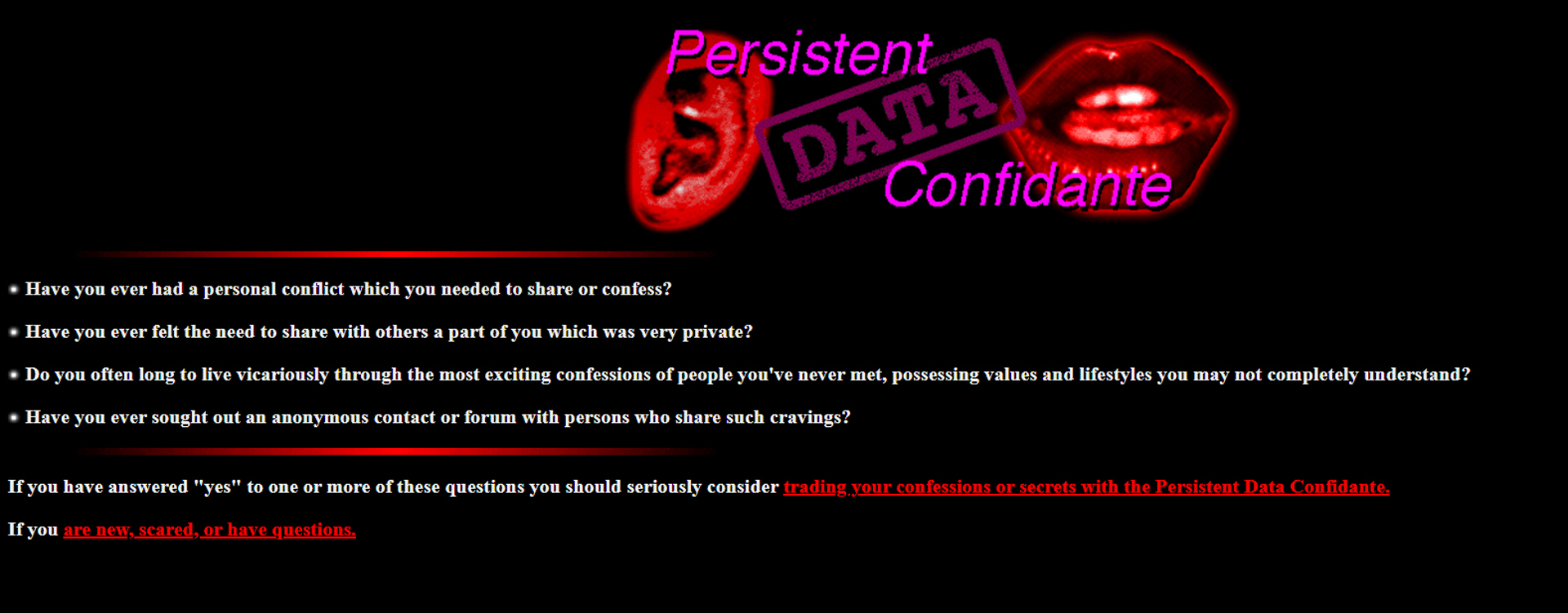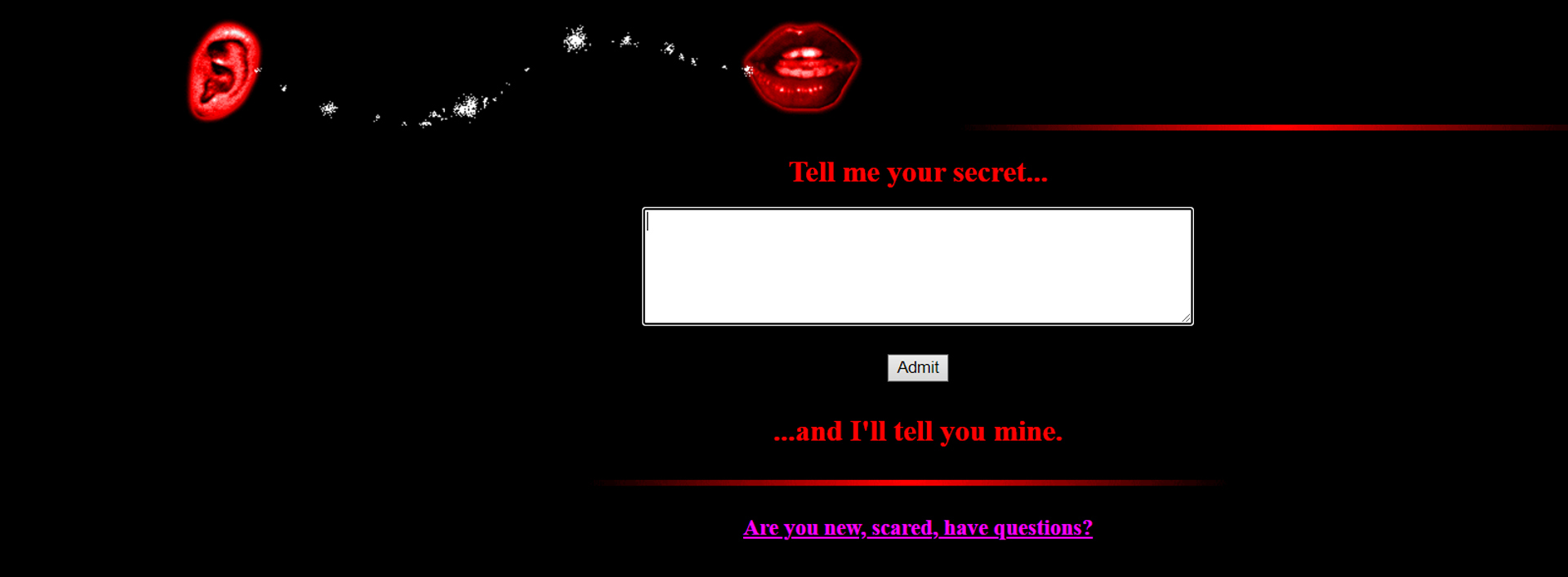Paul Vanouse, Lisa Hutton, Eric Nyberg: The Persistent Data Confidante
Title:
- The Persistent Data Confidante
Artist(s) and People Involved:
Exhibiting Artist(s):
Symposium:
- ISEA97: Eighth International Symposium on Electronic Art
-
More artworks from ISEA97:


Artist Statement:
- Present-day, confessional,TV talk show culture;
- Current US internet censorship policies, and
- Artificial Life.
The Persistent Data Confidante is an on-line public service allowing for the anonymous transfer of secrets/confessions. Once participating parties tell the “confidante” their secret, they receive a confession from another anonymous user with similar interests. The secrets are then rated by the participants. Each secret’s”popularity” or intrigue will increase its probability of re-telling the future — thus the best secrets will “live on” while the more banal will “die-off”. The main points of reference for the work are:
ad 1. Like a confessional talk show, The Persistent Data Confidante uses pop imagery and dramatic rhetoric to incite participation and fascination with charged “moral” issues.
ad 2. The work plays with recent US censorship policies noting that for www art galleries, a curated site places the responsibility to censor upon the site developer, whereas in an uncurated site the onus of responsibility rests on the contributor. In this strictly user-curated site, it places the judgment of “good taste” on anonymous users who’s approval ratings connote consent. Conversely, secrets of a dull or banal nature are presumably the most offensive to this community of internet users, and will probably be democratically eradicated.
ad 3. As secrets are retold (age), they become capable of producing sexual offspring. Each day, secrets that are mature (have lived for 100 re-tellings), and also popular (according to viewer ratings), will seek a compatible mate (one with similar content). These two secrets produce a new offspring which is composed of major clauses from these two parents. Newborn secrets are then forced to compete for user approval in the rigorous environment of the database if they are to live on to produce their own offspring.
This Mite component is of course referencing the manner in which secrets evolve in our verbal world—getting confused with others, and mutating uncontrollably as they are re-told. Our use of such a system is attempting to establish a parallel, verbal sociology of the net. The work is rather straight-forward for the individual participant, yet we hope to “set the stage” for a very complex, richly interactive social phenomena. Will users come to the site to live vicariously through the secrets of others; as exhibitionists to achieve pleasure in their anonymous confessions; or for reasons in-between these two poles? Which secrets will live to breed, and which will not be able to survive in the truly rigorous environment of the internet? What are the actual desires of principal internet users, when authorship and curatorial decisions are confidential and democratic.
Contributors:
Technical credits: Created by Paul Vanouse, Design by Lisa Hutton, Language Technology by Eric Nyberg,Technical Assistance from Bryan Kolodziej and Chris Stuart
Category:
All Works by the Artist(s) in This Archive:
- Paul Vanouse

Items 1-2000
[ ISEA97]
The Persistent Data Confidante
[ ISEA97]
Relative Velocity Inscription Devic...
[ ISEA2004]
Peoples PCR
[ ISEA2012]- Lisa Hutton

The Persistent Data Confidante
[ ISEA97]- Eric Nyberg

The Persistent Data Confidante
[ ISEA97]






